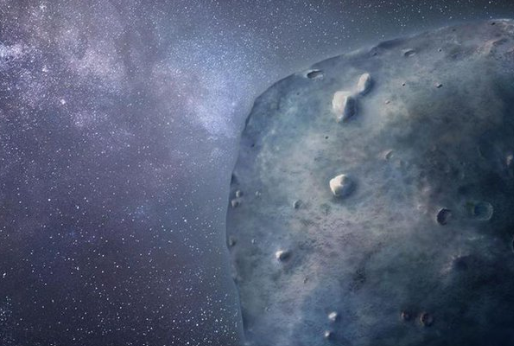Scientists were taken by surprise when an asteroid, previously undetected, entered Earth’s atmosphere on Wednesday. This one-meter-wide asteroid, named 2024 RW1, was discovered just eight hours before it lit up the sky over the Philippines in a fiery display. Fortunately, the asteroid was small enough that it burned up completely and did not cause any damage. However, its sudden appearance serves as a stark reminder of the potential threats that lie hidden within our solar system.
The incident highlights the ongoing risks posed by space rocks, from smaller, unexpected asteroids like 2024 RW1 to massive ones, such as those nearly a mile wide. Experts have repeatedly warned about various asteroids that could pose future threats to Earth, reminding us that the danger of an impact is very real. Some of the notable asteroids at risk of colliding with Earth include Bennu, 1950 DA, and 2023 DW, among others. These space rocks vary greatly in size and potential impact, but they all represent possible future collisions with Earth, even if the odds remain low.
Meet Phaethon, a weird asteroid that thinks it’s a comet – our new research may explain what’s going on https://t.co/W1Mwv5eKi2 pic.twitter.com/saLFKr7VFF
— SPACE.com (@SPACEdotcom) September 5, 2024
Asteroid collisions with Earth are not uncommon, though most are small enough to disintegrate in the atmosphere, creating the shooting stars we often see. NASA estimates that around 48.5 tonnes of meteoric material fall to Earth each day. However, large impacts are rare, and most space rocks don’t come close to Earth’s orbit. Still, history shows that collisions can have catastrophic consequences, such as the asteroid that struck the Yucatán Peninsula 66 million years ago, leading to the extinction of the dinosaurs. More recently, the Chelyabinsk meteor, a much smaller asteroid, exploded over Russia in 2013, causing significant damage and injuring 1,500 people.
Given the potential dangers, NASA and the European Space Agency (ESA) have developed programs to identify, categorize, and track so-called Near Earth Objects (NEOs). These programs aim to detect any potentially hazardous asteroids early and assess their chances of impacting Earth. As of now, ESA has over 1,600 NEOs on its “risk list,” but none are ranked above one on the Torino Scale—a measure used to assess the impact threat of NEOs. While this suggests a low probability of a catastrophic impact in the near future, experts emphasize that the risk is not zero, and preparations are essential.
The asteroid Bennu, for example, poses one of the more significant risks to Earth, with a one in 2,700 chance of hitting the planet on September 24, 2182. If it were to collide with Earth, it could release an amount of energy equivalent to 1.4 billion tons of TNT, causing widespread destruction. Similarly, 2023 DW, known as the “Valentine’s Day asteroid,” has a slim chance of hitting Earth on February 14, 2046, but even a small asteroid of this size could cause substantial damage.
A few hours ago, a small asteroid lit up the night sky of the Philippines by burning above the country. This small space rock was the ninth to be detected before hitting the Earth’s atmosphere. pic.twitter.com/Y52wSL7QGm
— Mohammad Amin Sadriyan (@aminsadriyan) September 5, 2024
Scientists and space agencies continue to improve methods for detecting and deflecting potentially dangerous asteroids. Programs like NASA’s DART mission, which successfully altered an asteroid’s course in 2022 by crashing a spacecraft into it, demonstrate the kind of planetary defense measures that could be crucial in preventing a future catastrophe. While the immediate risk of a significant asteroid impact is low, the unpredictability of these space rocks means that monitoring and preparedness are vital for Earth’s long-term safety.
Key Points:
- A previously undetected asteroid, 2024 RW1, entered Earth’s atmosphere, highlighting the ongoing threat of space objects.
- Various asteroids, including Bennu and 2023 DW, pose a potential risk to Earth, although the odds of impact are currently low.
- Historical impacts like the one that caused the extinction of the dinosaurs show the catastrophic potential of large asteroids.
- NASA and ESA are actively tracking over 1,600 Near Earth Objects, although none are currently ranked high on the Torino Scale for impact risk.
- Planetary defense measures, like NASA’s DART mission, are essential for mitigating future asteroid threats and protecting Earth.
RM Tomi – Reprinted with permission of Whatfinger News


